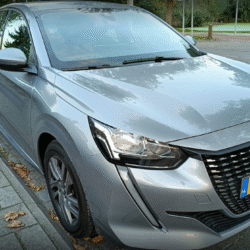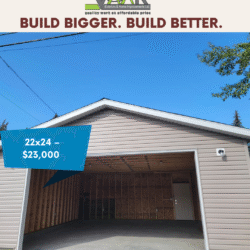If you run a business, you know how expensive essential tools can be. Buying new equipment can drain your capital fast, leaving little room for other needs. That’s where an Equipment Lease can change the game. It’s a smarter way to get the machines, vehicles, or tools your business needs without paying the full price upfront. I learned this firsthand when I was starting out, and the right lease saved my business from running dry before it even found its footing.
Leasing lets you use high-quality equipment while keeping your cash flow strong. Instead of owning the item, you pay a fixed monthly amount to use it. It’s like renting but with added flexibility and ownership options at the end of the term.
Let’s break down how it works, why it’s often better than buying, and how companies like MH Car Lease make the process smooth and practical.
What Is an Equipment Lease
An Equipment Lease is a contract between a business and a leasing company that allows you to use equipment for a set period in exchange for monthly payments. You can lease anything from construction machinery to office computers or delivery trucks.
When I opened my first small logistics company, I couldn’t afford brand-new trucks. Buying even two would’ve wiped out my startup capital. Instead, I went with MH Car Lease. Their commercial equipment lease agreement gave me access to modern trucks at a predictable monthly rate. It kept my business liquid and gave me flexibility to upgrade when needed.
This experience taught me that leasing is not just about getting what you need today. It’s about keeping your business future-proof.
How Does Equipment Leasing Work
If you’ve ever wondered how does equipment leasing work, think of it as a long-term rental. You choose the equipment you need, agree on terms like duration and payments, and start using it immediately. The leasing company remains the owner, while you get full operational use.
There are two main types:
-
Operating Lease: You rent equipment for a short or medium term. Perfect when you plan to upgrade regularly.
-
Finance Lease: You use the equipment for most of its life and may have the option to buy it at the end.
The process is straightforward. You apply, submit your business financials, and once approved, you sign an equipment lease agreement that outlines terms, maintenance, and payment details.
Why Businesses Choose to Lease Instead of Buy
Many business owners face the lease vs buy equipment decision. Both have pros and cons, but leasing offers clear financial advantages for most small and medium businesses.
Here’s why leasing wins for many:
-
Preserves Cash Flow: You don’t tie up capital in expensive purchases.
-
Tax Benefits: Lease payments can often be deducted as business expenses.
-
Access to Latest Technology: With an industrial equipment leasing plan, you can upgrade regularly without dealing with outdated tools.
-
Flexible Terms: You can customize duration, payments, and end-of-term options.
-
Lower Risk: No worry about depreciation or resale value.
When I upgraded my delivery trucks, the flexibility to switch to newer, more fuel-efficient models every few years was a big plus. Owning would’ve trapped me in old technology.
Types of Equipment You Can Lease
Almost any tool or machine used for business can be leased. Here are some examples:
-
Construction machinery and heavy tools
-
Commercial vehicles and trucks
-
IT hardware and servers
-
Manufacturing and production machines
-
Medical and dental equipment
-
Office furniture and electronics
MH Car Lease specializes in vehicle and commercial business equipment rental, helping companies stay mobile and efficient without heavy investment.
Understanding Equipment Lease Terms and Conditions
Before signing anything, always understand the equipment lease terms and conditions. These outline responsibilities for maintenance, insurance, early termination, and end-of-lease options.
Some leases allow you to buy the equipment at a reduced price once the term ends. Others require returning it. You can also extend the lease at a lower monthly rate.
When I first leased through MH Car Lease, I made sure to read every clause. The clarity of their terms helped avoid surprises. Their team explained what would happen if I wanted to end early or swap vehicles mid-term. That level of transparency made me a repeat customer.
The Average Cost of Equipment Leasing
The average cost of equipment leasing depends on several factors, including:
-
Equipment value
-
Lease term length
-
Credit score and business history
-
Residual value at the end of the term
On average, monthly payments range from 2% to 5% of the total equipment cost. So, if your machine costs $50,000, your monthly payment could fall between $1,000 and $2,500.
It might sound like a lot, but when you consider the lack of upfront expense, tax benefits, and ability to upgrade, the math often works in your favor.
Benefits of Leasing Equipment for Business
The benefits of leasing equipment for business go beyond cost savings. It also offers stability, planning flexibility, and peace of mind.
Here’s how it helps you grow:
-
Predictable Budgeting: Fixed payments make cash flow easier to manage.
-
Maintenance Support: Some leases include maintenance, saving time and cost.
-
Scalability: You can add more leased equipment as your business grows.
-
Improved Credit Management: Regular payments help build business credit.
-
Faster Approval: Easier to qualify for than traditional loans.
I remember how quick the approval process was when I worked with MH Car Lease. Within days, my fleet was ready. Compare that to the weeks it took my friend to get a bank loan approved for his purchase plan.
Equipment Lease vs Loan Comparison
An equipment lease vs loan comparison can clarify your best option.
With a loan, you own the asset but bear depreciation and resale risk. You also need a higher upfront payment.
With a lease, you avoid those risks and enjoy flexibility. The leasing company retains ownership, handles depreciation, and offers upgrades.
If you’re a new business without much credit history, leasing is often the smarter route. When I was starting out, banks were hesitant to lend, but leasing opened the door to the equipment I needed to compete.
How to Apply for an Equipment Lease
Knowing how to apply for an equipment lease is simple once you understand the process. Here’s a quick step-by-step outline:
-
Identify Your Equipment Needs: Be specific about size, model, or capacity.
-
Choose a Reputable Leasing Company: MH Car Lease, for example, offers commercial and industrial leasing tailored to different sectors.
-
Submit Your Application: Include business financials and credit information.
-
Review Lease Options: Compare rates, terms, and end-of-term conditions.
-
Sign and Receive Equipment: Once approved, the leasing company pays the vendor, and you start using the equipment.
Always choose a partner who values long-term relationships. The right lessor won’t just hand over equipment, but will guide you through upgrades, renewals, and maintenance over time.
Best Equipment Lease Companies Near Me
When you search best equipment lease companies near me, focus on three things: reliability, transparency, and flexibility.
A trustworthy company should:
-
Offer clear contract terms.
-
Provide fast approvals.
-
Allow early upgrades or buyout options.
-
Maintain responsive customer support.
MH Car Lease consistently checks these boxes. They understand that business owners need dependable service, not just a contract. Their commitment to making leasing easy and beneficial is what makes them stand out.
Using an Equipment Lease Calculator
Before committing, try an equipment lease calculator. It helps estimate your monthly payments based on cost, term, and interest rate.
For example, if your equipment costs $40,000 and your lease term is 36 months at a 4% rate, you can instantly see if it fits your budget. It’s a great tool for financial planning and comparing offers.
I used one before leasing through MH Car Lease, and it gave me clarity about long-term affordability. That confidence made the decision easy.
Long-Term Equipment Lease Planning
A long-term equipment lease can be more cost-effective if your business needs stable tools for years. It offers lower monthly payments and can include maintenance agreements.
I once leased a set of industrial compressors for five years. The predictable payments made accounting easier, and I didn’t have to deal with repairs since maintenance was included.
Long-term leases make sense for heavy-use equipment or core assets that aren’t likely to change soon.
Common Mistakes to Avoid When Leasing Equipment
Even though leasing is simpler than buying, there are a few traps to avoid:
-
Ignoring fine print in the equipment lease agreement.
-
Not checking for hidden maintenance costs.
-
Choosing a term that’s too short or too long.
-
Failing to plan for end-of-lease decisions.
-
Overlooking insurance or liability coverage.
My advice is to treat it like any major business decision. Read, ask, and clarify before signing. A good partner like MH Car Lease will always walk you through it clearly.
Final Thoughts
An Equipment Lease is more than a financial arrangement. It’s a strategy for smarter growth, better liquidity, and access to modern technology without the burden of ownership.
For me, leasing wasn’t just a way to save money. It was a turning point that helped my business stay competitive and agile.
If you’re running a growing business or starting fresh, explore what MH Car Lease offers. Their approach to equipment financing options and support for small business equipment lease programs can help you expand without breaking your budget.

